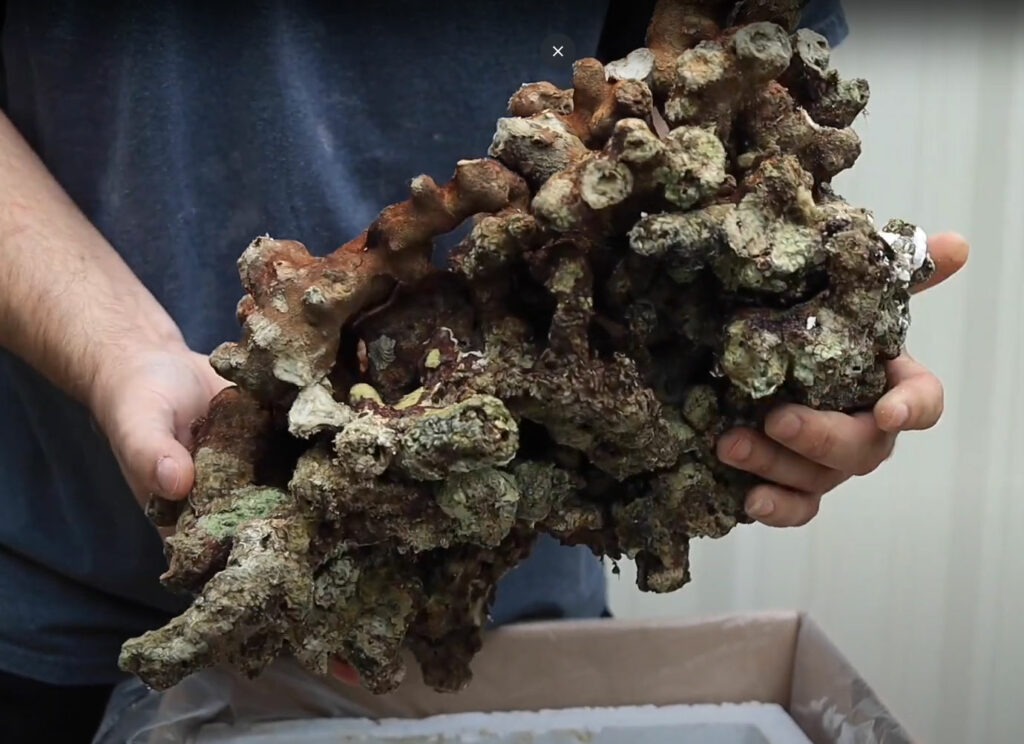
Kris Cline at Carolina Aquatics, was notably excited on a phone call we placed to learn about the Jakarta live rock that had arrived at his wholesale facility. “Yes, we really do have live rock! It’s pre-cured in Jakarta, shipped out of the country in classic Jakarta fish boxes. It was shipped by boat to the US, then by pallet to our facility. It arrived damp, looking great, and had NO FOUL SMELL!“
For those who remember the days of having to cure fresh rock, or dealing with the decay of uncured rock that was slowly shipped over days or weeks, the fact that this live rock showed up without offending odors is no small feat, and speaks to the quality of what has become available.
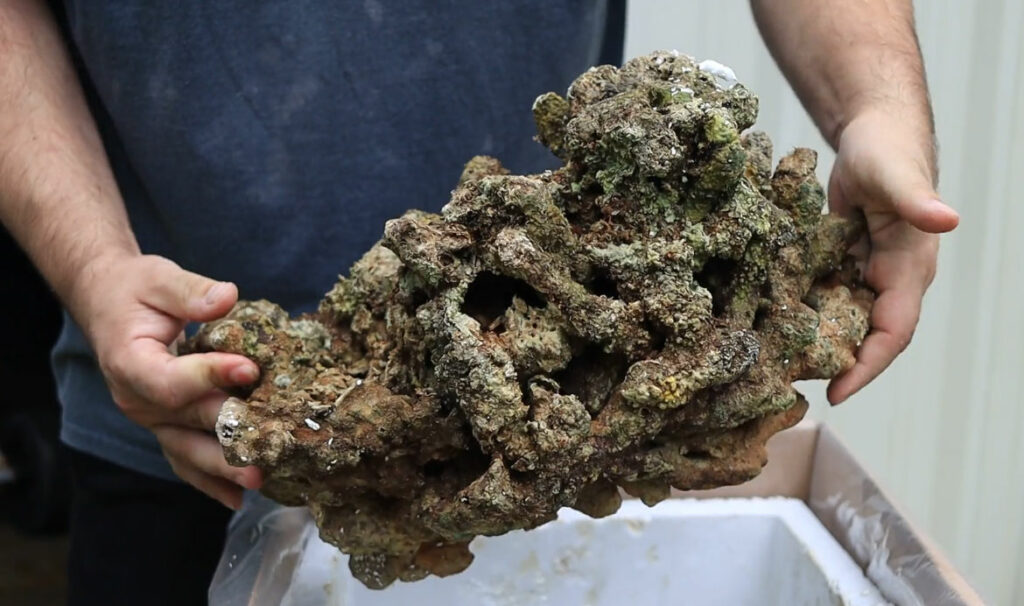
Cline was almost in a state of disbelief as he shared the news of “real,” wild-harvested “live rock” entering the marine aquarium trade after having largely gone absent for several years. “This is the first time in at least two years,” Cline noted, citing on-again-off-again COVID-related lockdowns having all sorts of negative impacts on the Indonesian supply chain.
“This stuff reminds me of the old Marshall Islands [live rock] that we used to have,” he said in the video showcasing this new rock. Historically, Jakarta live rock has a reputation for quality, but it hasn’t been a prominent feature in the aquarium trade in the way that rock from Fiji, Tonga, and the Marshall Islands had once been.
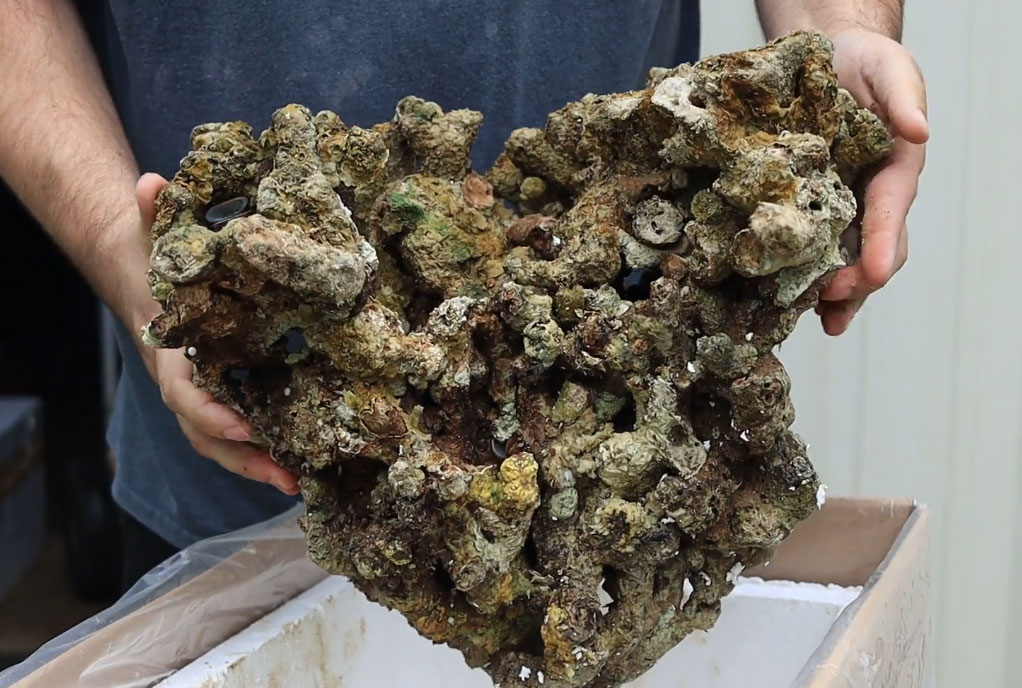
It is Cline’s understanding that:
- That was the first shipment.
- Only two US-distributors received rock from this importation, Carolina Aquatics being on the East Coast, along with a West Coast supplier, Route 66 Marine.
- No further CITES permits have been issued for additional live rock exports from Jakarta.
- No timeline is in place for when that could change due, to COVID-related lockdowns in Jakarta.
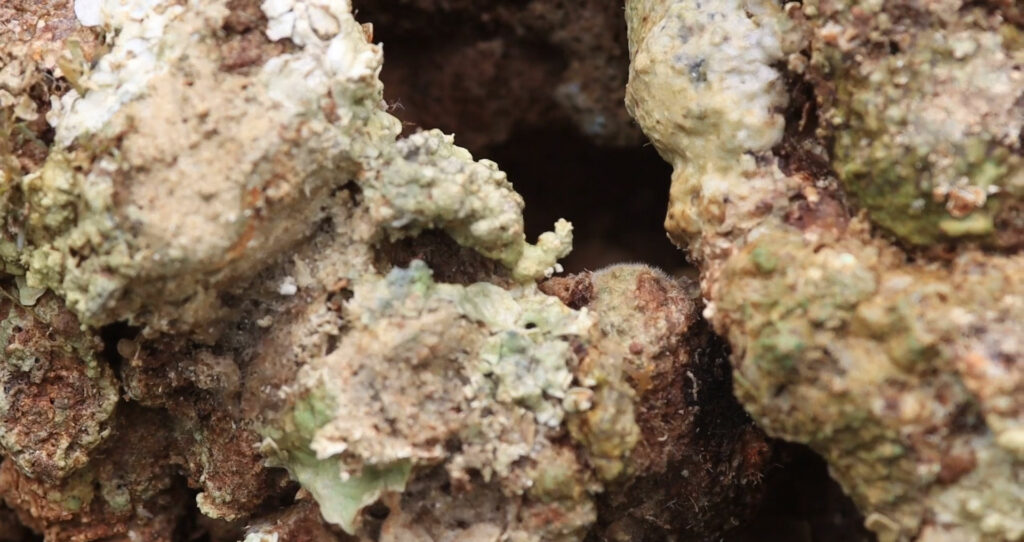
Will Reef Aquarists Still Want Live Rock?
Cline is curious to see how the market will receive this rock. Several years ago, due to dwindling available options and transit problems, Carolina Aquatics made the switch to only distributing man-made, dry rock options. He noted that many aquarists now routinely start their reef aquariums with a foundation of dry rockwork; the hobby has simply shifted in that direction for many varied reasons and many perceived benefits.
Dry rock has risen in preference in part because it avoids a wide range of potentially problematic hitchhikers, perhaps one of the primarly selling points of dry rock options. However, as we’re starting to realize, dry rock also presents a separate bevy of challenges, the latest of which seems to be a concurrent, diminished microbial biodiversity in a reef tank, as reported in the July/August 2021 issue of CORAL Magazine. In this respect, the suggestion that dry-rock reef aquariums may benefit from “at least one piece” of live rock from an established, pest-free tank, is starting to make a lot of sense.
Ocean Rock Is Hard To Come By
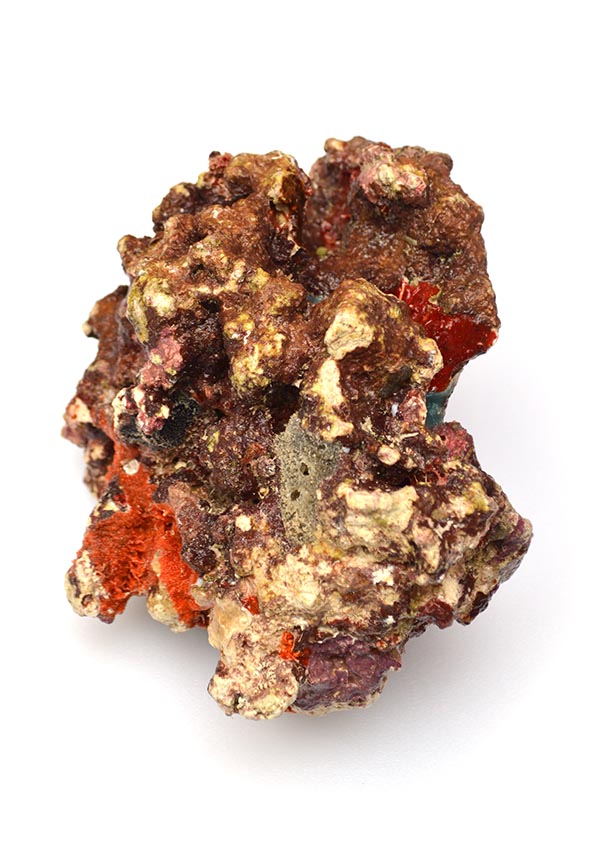
Live rock with a tie to the ocean remains a preference for some. Aquarists who have utilized ocean-harvested or maricultured live rock options before may still remember the upsides. Not every hitchhiker is a foe! “Authentic” live rock is arguably one of the most magical things a first-time reefkeeper might add to the aquarium, when every new snail, starfish, fleck of macro algae, brilliantly colored sponge, or near-microscopic crustacean, is a source of wonder and fascination.
For a wide range of reasons, there hasn’t been many options for “ocean-grown” rock readily available to aquarists in the US in the last 10 years.
One of the ongoing staples available to ardent live-rock adherents has been the maricultured live rock from Florida. This is now produced by just a handful of family-run companies such as KP Aquatics in the Florida Keys and Tampa Bay Saltwater on the Gulf Coast of Florida. Historically, this rock is generally dry, quarried rock that is placed on a leased farm site on the ocean floor, and colonized by reef life over a period of months or years.
From Fiji, Walt Smith’s Reef Rock 2.0 is a man-made rock that is cultivated in the ocean, and is another aquacultured live rock option still making its way into the U.S. aquarium trade while any other coral or live rock is still prohibited from Fijian export. Walt Smith noted that Tampa Bay Saltwater is now transitioning to utilizing the dry version of WSI’s Reef Rock, 2.1, in their ocean mariculture going forward.
Getting Your Hands on this new Jakarta Rock
For those seeking to obtain some of this precious Jakarta live rock, Cline suggests that hobbyists reach out to their local fish shops to inquire, as Carolina Aquatics is strictly wholesale to the aquarium trade.
Cline notes that there may be some initial sticker shock at the retail pricing of this rock. This is in part due to the real world realities that freight prices have continued to climb due to the impact of the COVID pandemic.
However, Cline wants to remind interested aquarists that there is a lot of void space in these rocks, making them much less dense compared to other options. It may cost a lot more per pound, but you’ll use significantly less Jakarta live rock to fill the same space in your aquarium.
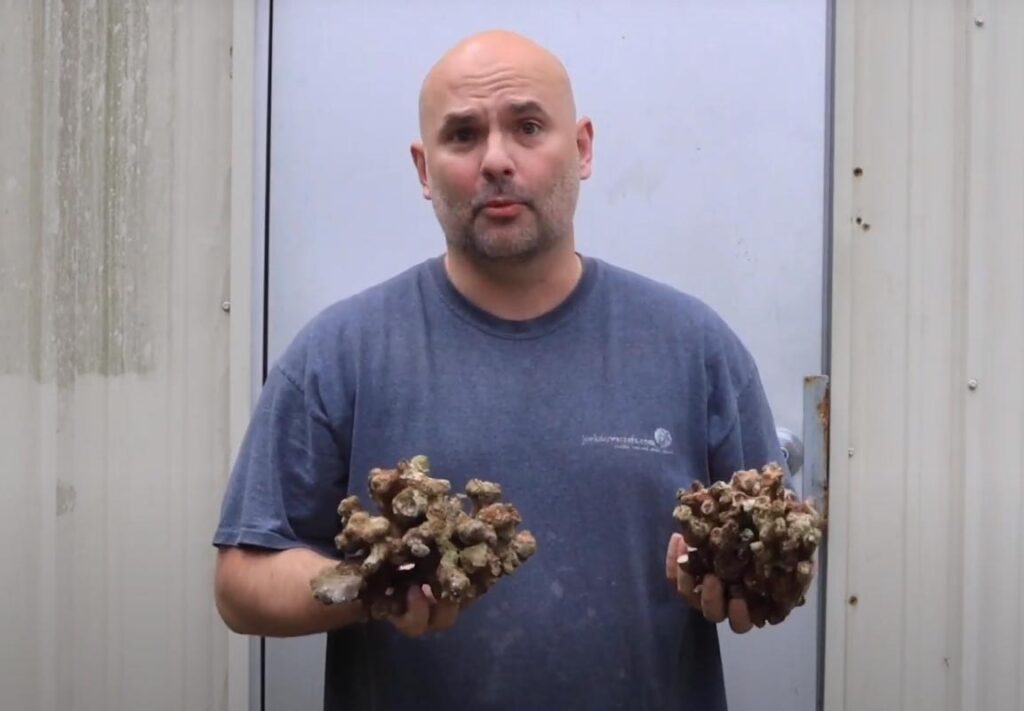
And for some aquarists, there may simply be no substitute for the real deal, at least when it comes to live rock.
Watch The Video





Boat and air shipping is a killer, there is only one way to get fully living live rock, and that is to take delivery of rock that has remained immersed in seawater, with life supporting circulation and temperature control from harvest until delivery.
Get some LIVE rock from the only supplier that delivers AND directly benefits the environment as part of the business model
Is the live rock still available?
Brandon.
Brandon, this post was from 2021. Carolina Aquatics is an importer/wholesaler/distributor, so your best bet would be to talk with your LFS and let them know what you’re looking for. Maybe they can help?